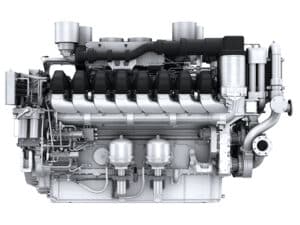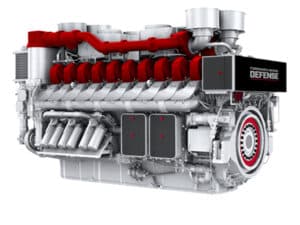
Op-Ed: Fuels, emissions and sustainability
Written by Heather Ervin
Nathan Wood
By Nathan D. Wood, Carbon Reduction Scientist
Nathan Wood is a carbon reduction scientist at U.K.-based Tunley Engineering and is responsible for processing, analyzing, and presenting carbon assessment data. He combines this with finishing his Ph.D in “Modelling the Thermoelectric Properties of SrTiO3 and its (Nano-)composites” at the University of Huddersfield. He has an undergraduate background in chemistry, with his Ph.D focusing on computational materials science. Thus far, he has published one paper investigating defect chemistry in SrTiO3, with several more planned.
The shipping industry is a key economic driving-force of the world economy, with roughly 90% of traded goods reliant on shipping. However, the current generation of ships, and most port infrastructure, are heavily reliant on fossil fuels.
In recent years, there have been a number of regulations and targets put in place to reduce the greenhouse gases (GHG) produced by the shipping industry. The International Maritime Organization (IMO) has set strict goals to reduce the carbon footprint of international shipping by at least 40% by 2030, compared to 2008 levels. By 2050, the 2021 EU Green Deal sets goals for port cities to reduce their greenhouse gas emissions by 90%. The EU has also openly stated the need to include shipping in its Emissions Trading System (ETS), which places annual limits on company emissions and imposes financial penalties on those who exceed the limits.
Approximately 2.5% of the world’s CO2 emissions, or 940 MtCO2 per year, are attributed to shipping. The current fuel of choice for the shipping industry is heavy fuel oil (HFO), making up 72% of the total fuel consumption. A central issue with HFO is the release of pollutants such COx, NOx and SOx and particulate matter (PM) when combusted. According to estimates, 13% of the world’s SOx emissions come from the shipping sector. Emissions of SOx and NOx are of particular concern to human health. SOx can often exist as PM2.5, particles small-enough to enter directly into the human bloodstream through the lungs, contributing to a variety of health concerns.
With a variety of potential fuel types available, the shipping industry is determinedly moving towards alternative fuels to decrease its environmental footprint. Potential future fuels like hydrogen and liquid natural gas (LNG) are gaining popularity. Nevertheless, these decisions raise concerns about sustainability and reliance on fossil fuels.
LNG has gained much popularity in recent years, now making up roughly 2% of fuel use. It is advantageous compared to HFO as it produces significantly lower pollutants, reducing SOx by over 90%, PM by over 95% and NOx by over 80%. However, compared to ships powered by heavy fuel oil, the production of LNG ships is substantially more expensive and continues the reliance on fossil fuels. There is also “methane slip”, the release of unburnt methane, a potent GHG, from LNG-powered engines. According to research by the European Transport and Environment (T&E) department, even under optimistic assumptions about methane slip, a shift to LNG may not reduce GHG emissions.
Hydrogen, as a fuel, is also discussed with great promise. When combusted, it burns very clean only producing water as a product. However, the current production of hydrogen is reliant on fossil fuel reforming, with 96% of all hydrogen currently produced this way. Although technologies such as electrolysis exist which can produce hydrogen from water using renewable electricity, currently, reforming fossil fuels is more economically viable. Another key issue is the higher production of NOx emission compared to burning fossil fuels, however, this can be mitigated through the use of technologies such as catalytic converters.
Ammonia has also gained much attention in recent years as a possible future fuel. Ammonia is made using by the catalytic reaction of nitrogen and hydrogen under high pressure and temperature. This process is highly energy intensive, leading to a large carbon footprint. Currently, most ammonia produced is produced via reforming methane into hydrogen. Like hydrogen, ammonia has the advantage of producing no CO2, SOx or PM when combusted, however, NOx emissions can be substantial in depending on the combustion conditions. However, these can be mitigated by optimizing the fuel-to-air ratio.




